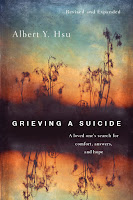Michael Emlet, in his
new book, Descriptions and Prescriptions: A Biblical Perspective on
Psychiatric Diagnoses and Medications (New Growth), understands and
explains two big words that are important to those who are ministry people, and
he applies these words and functions to those who need them.
These are the important
words and terms: Psychiatric Diagnosis, and Psychoactive Medications. Emlet is
on the faculty at Christian Counseling and Education (CCEF) in Glenside, PA,
and he has excellent experience to discuss these important and often helpful
words and terms.
Emlet divides his book
into two sections, on Psychiatric Diagnosis and on Psychoactive Medications.
There are twenty-two short chapters. He wrote his book primarily for helpers in
the church, pastors, counselors, elders, deacons, youth workers; whoever needs
this kind of help in their ministry will appreciate Michael Emlet and his book.
Along the way, he
discusses specific hazards to spiritual growth, whether using diagnosis and
medications as gifts or gods. Basic to his approach is his understanding of the
human person with both a spiritual aspect and a physical aspect. Psychoactive
Medications may be necessary and effective, but they will not address the
person’s relationship to God. On the other hand, to treat a person’s struggles
as only spiritual will deny the physical needs. God made us embodied spirits
and both aspects will be involved in the counselor’s ministry.
One of the most helpful
chapters in the book is the fourth, "The problems and pitfalls of
psychiatric diagnosis: description not explanation." Emlet’s
point is that a list of symptoms does not explain why they exist. An unacknowledged
assumption sometimes is the key to the difference. He illustrates: "this
assumption of biological root cause is widespread in our culture." This
assumption can lead to normalizing behavior that stems from our fallen
condition, treating some temptations as alternate lifestyles.
For example, assuming
that various sexual orientations are biologically rooted and therefore normal
(and should be expressed as alternate lifestyles) is very different from the
biblical assumption that, whatever their biological or social source, some
sexual expressions are sinful and therefore should, and can, be resisted,
encouraged by the promise of the mercy and grace of God. Transformation of the
whole person, including behavior, is the biblical goal.
Emlet writes, "we must
acknowledge the complex interaction of multiple factors—physical, spiritual,
relational, situational, and cultural—that combine in causative ways for a
given individual." He proposes a balanced approach to helping someone
who’s suffering emotionally. A psychiatric diagnosis might help, but it’s only
a starting point towards healing, not a life sentence.
—Lois & Larry Sibley



